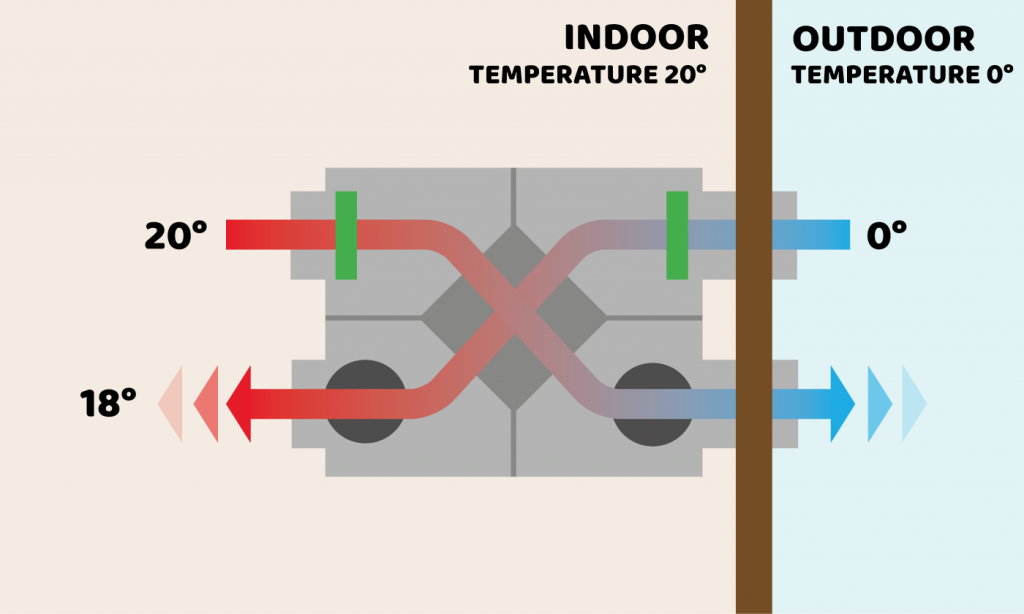The All-Inclusive Overview to the Uses of Heat Recovery Ventilation in Modern Buildings
Heat Recovery Ventilation (HRV) systems stand for a significant improvement in constructing modern technology (HRV Heat Recovery Ventilation). They supply an approach for trading stagnant indoor air with fresh exterior air while reducing energy loss. This method not only enhances indoor air quality but additionally contributes to power efficiency in both property and commercial structures. Understanding the numerous applications and advantages of HRV can expose its critical function in modern-day design and sustainability initiatives. The effects of this technology deserve checking out further
Recognizing Heat Recovery Ventilation Solutions

Although several modern buildings focus on power efficiency, understanding warm recuperation ventilation (HRV) systems is essential for optimizing interior air high quality and minimizing power intake. HRV systems function by transferring warm from stagnant indoor air to incoming fresh air, successfully preserving comfy interior temperatures while lessening power loss. These systems are composed of a heat exchanger, fans, and ductwork that facilitate the blood circulation of air. Throughout winter, HRV devices catch and recycle warm from the outward bound air, while in summer season, they can aid cool down inbound air. By continually trading air, HRV systems likewise reduce moisture and the focus of indoor contaminants. Correct setup and upkeep of HRV systems are necessary for their performance and efficiency in improving general building performance and comfort.
Benefits of Heat Recovery Ventilation
Heat recovery ventilation systems use various benefits that boost both power efficiency and interior air quality in modern-day buildings. By catching and recycling power from exhaust air, these systems greatly decrease cooling and heating costs, leading to lower power intake. Furthermore, they keep a consistent flow of fresh outside air, decreasing the threat of indoor air toxins and allergens. This continuous exchange assists regulate moisture degrees, stopping mold development and ensuring a much healthier living environment. Furthermore, HRV systems add to sustainability objectives by decreasing total carbon footprints. Their capacity to optimize ventilation without sacrificing thermal comfort makes them a beneficial addition to contemporary structure layout, promoting both economic and environmental benefits.
Applications of HRV in Residential Buildings
As house owners progressively focus on energy performance and indoor air high quality, the applications of warmth recovery ventilation (HRV) systems in property structures have ended up being extra prevalent. HRV systems are especially beneficial in firmly secured homes, where keeping fresh air blood circulation is vital for preventing wetness accumulation and interior toxins. They properly transfer warmth from outgoing stagnant air to inbound fresh air, minimizing power expenses linked with heating and air conditioning. Furthermore, HRVs can improve convenience degrees by managing humidity and temperature level. They are additionally versatile for various domestic styles, including single-family homes and multi-unit structures. On the whole, integrating HRV systems supports lasting living techniques while ensuring a much healthier interior atmosphere for passengers.
HRV in Commercial and Commercial Settings
In industrial and commercial setups, the implementation of heat recuperation ventilation (HRV) systems has become increasingly important for maximizing energy efficiency and maintaining air high quality. These systems successfully move warm from exhaust air to incoming fresh air, reducing the requirement for additional heating or air conditioning. This not only lowers energy costs yet additionally adds to sustainability initiatives. Industries such as production, warehousing, and office complex profit substantially from HRV systems, as go to my site they assist manage temperature and humidity levels, making sure a comfortable and productive setting. Additionally, HRV systems help in removing pollutants and excess wetness, improving indoor air quality. As laws around air top quality come to be more stringent, the fostering of HRV innovation is likely to grow, making it an essential component of modern commercial and commercial infrastructure.
Future Trends in Heat Recovery Ventilation Modern Technology

Regularly Asked Questions
Exactly How Does Heat Recovery Ventilation Impact Indoor Air Quality?
Heat recovery ventilation significantly improves interior air quality by continuously trading stale interior air with fresh outdoor air while recuperating power. This process lowers toxins, maintains optimal humidity degrees, and ensures a healthier environment for occupants.
Can HRV Equipments Be Set Up in Existing Buildings?
HRV systems can indeed be mounted in existing buildings. Retrofitting might call for modifications to ductwork and air flow designs, but it substantially improves energy efficiency and interior air high quality, making it a practical alternative for older frameworks.
What Upkeep Is Required for HRV Equipments?

Are There Details Climates Where HRV Is Extra Efficient?
Heat recovery ventilation systems are especially effective in climates with considerable temperature level distinctions between seasons. additional resources These systems maximize energy performance by recovering warm from exhaust air, making them perfect for both cool and reasonably warm environments.
Just How Do HRV Systems Affect Power Bills?
